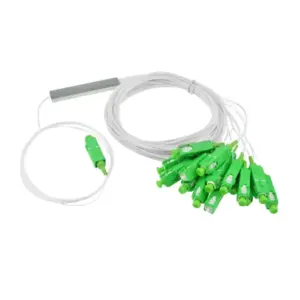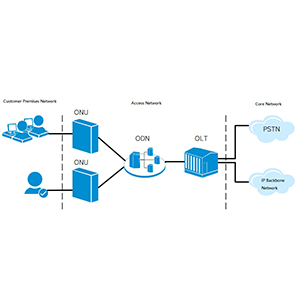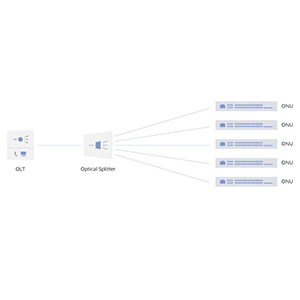Duplex and simplex fibers play different roles in fiber optic communications. This article will explore the similarities and differences between these two types of fibers. We will first define the structure and working principle of duplex fiber and introduce its main application scenarios; then, we will explain the structure and working principle of simplex fiber and explain its main application scenarios.
Next, we will focus on comparing the differences between duplex fiber and simplex fiber in terms of optical path direction, number of fibers, transmission capacity, cost and complexity, and analyze the differences between the two in terms of two-way/one-way communication, cable structure, data transmission rate, etc. Finally, we will provide decision-making basis for choosing duplex or simplex fiber according to specific application requirements.
Basic characteristics of duplex fiber
Let me introduce you to the basic characteristics of duplex fiber in detail.
Structure and working principle of duplex optical fiber:
(1) Structural features:
- Duplex optical fiber consists of two separate optical fiber cores
- The two optical fiber cores are parallel to each other and share the same optical fiber outer sheath
- It can realize bidirectional transmission of uplink and downlink data on the same optical fiber
(2) Working principle:
- Duplex optical fiber uses different optical wavelengths to achieve bidirectional transmission
- Uplink and downlink signals are transmitted using different optical wavelengths
- Signals in two directions are separated and multiplexed through an optical wavelength division multiplexer
In short, duplex optical fiber realizes bidirectional transmission of optical signals by integrating two complementary optical fiber cores in the same optical fiber outer sheath. This structure greatly simplifies the laying of optical fibers and improves the wiring efficiency of the network.
Main application scenarios of duplex optical fiber:
(1) Optical fiber communication network
- Widely used in fixed broadband, mobile communication and other networks
- Greatly simplified the deployment and maintenance of optical fiber networks
(2) Optical fiber sensing system
- Used for bidirectional signal transmission of optical fiber sensors
- Improved the overall performance and reliability of the sensing system
(3) Optical fiber test instrument
- Used to connect the test instrument with the optical fiber system under test
- Convenient for bidirectional testing of uplink and downlink signals
(4) Fiber optic cable system
- Such as submarine optical cable and aviation optical fiber system
- Greatly reduced the wiring cost and space occupied by optical cables
In general, duplex optical fiber is widely used in optical communication, optical sensing and optical testing with its unique bidirectional transmission capability, which greatly improves the overall performance and deployment efficiency of optical fiber networks and systems.
Basic characteristics of simplex optical fiber
Let me introduce you to the basic characteristics of simplex optical fiber in detail.
Structure and working principle of simplex optical fiber:
(1) Structural features:
- Simple optical fiber contains only one optical fiber core
- The optical fiber core is wrapped by the outer sheath of the optical fiber
- Only one-way optical signal transmission can be achieved
(2) Working principle:
- Simple optical fiber can only transmit optical signals in one direction
- Uplink and downlink signals must use different optical fibers
- No need to use an optical wavelength division multiplexer to separate signals
In short, compared with duplex optical fiber, the structure of simplex optical fiber is simpler because it contains only one optical fiber core and can only achieve one-way optical signal transmission.
Main application scenarios of simplex fiber:
(1) Low-cost network deployment
- Used in some cost-sensitive application scenarios
- Such as subscriber lines in FTTH networks, etc.
(2) Some special fiber systems
- Such as unidirectional monitoring links in fiber sensor networks
- Or some special point-to-point fiber communication systems
(3) Renovation of old fiber systems
- Renovate the original duplex fiber to simplex fiber
- To achieve the purpose of reducing costs and simplifying the structure
(4) Some temporary fiber applications
- Such as wiring at temporary event sites or construction sites
- Fiber links that need to be quickly built
In general, although simplex fiber has relatively limited functions, it has a simple structure and low cost, and still plays an important role in some specific application scenarios.
Differences between duplex fiber and simplex fiber
Let me analyze the main differences between duplex fiber and simplex fiber in detail.
Direction of optical path:
- Duplex fiber can achieve bidirectional communication in both upstream and downstream, while simplex fiber can only transmit in one direction.
- Bidirectional communication can improve network efficiency and transmission performance, but it also increases system complexity.
- Unidirectional communication is suitable for some cost-sensitive application scenarios with relatively simple functional requirements.
Number of Fibers:
- Duplex fiber consists of two independent fiber cores, while simplex fiber has only one fiber core.
- Duplex fiber is relatively complex in structure and requires more materials and manufacturing costs.
- Simple fiber is simpler in structure and has lower costs, but wiring and connection are also relatively complex.
Transmission Capacity:
- Since duplex fiber can achieve bidirectional transmission, it has a higher total transmission bandwidth.
- Although simplex fiber has a lower transmission capacity, it can often meet most application requirements.
- For application scenarios with high bandwidth requirements, duplex fiber has more obvious advantages.
Cost and complexity:
- Due to differences in structure and manufacturing process, the cost of duplex fiber is usually higher than that of simplex fiber.
- The system design and maintenance of duplex fiber are also relatively more complex, requiring more professional technical support.
- In terms of cost and complexity, simplex fiber is usually more advantageous.
In short, duplex fiber and simplex fiber have their own advantages and disadvantages, and need to be selected according to specific application scenarios and technical requirements. Duplex fiber is suitable for scenarios that require high bandwidth and two-way communication, while simplex fiber is more suitable for cost-sensitive applications with simpler functional requirements.
Considerations for choosing duplex fiber and simplex fiber
Let me summarize for you how to choose duplex fiber or simplex fiber in practical applications.
Choose according to specific application requirements:
(1) Bandwidth and communication capabilities
- If high bandwidth and bidirectional communication are required, duplex fiber should be selected
- If one-way transmission can meet the requirements, simplex fiber can be selected
(2) Network complexity
- Duplex fiber structure and system design are more complex
- If you pursue simplicity and ease of use, simplex fiber may be a better choice
(3) Cost budget
- Duplex fiber manufacturing cost and deployment cost are usually higher
- For cost-sensitive applications, simplex fiber has more advantages
(4) Installation and maintenance
- The wiring and connection of simplex fiber are relatively simpler
- If you need more convenient installation and maintenance, you can choose simplex fiber
Decision-making basis for selection:
(1) Transmission performance requirements
- Evaluate the required bandwidth, data rate and communication direction
- Choose duplex or simplex fiber based on these performance requirements
(2) System complexity and reliability
- Evaluate the complexity and maintenance difficulty of the network architecture
- Choose the fiber type that can better balance complexity and reliability
(3) Cost budget and deployment conditions
- Reasonably estimate the life cycle cost of duplex and simplex optical fibers
- Choose the type of optical fiber that can minimize costs
(4) Installation and maintenance requirements
- Evaluate the convenience of on-site wiring, connection and maintenance
- Choose a fiber type that is simpler and easier to use
In short, choosing between duplex and simplex optical fibers requires comprehensive consideration of performance requirements, system complexity, cost budget, installation and maintenance, and making the best choice based on actual application scenarios.
Summary
Reasonably choosing duplex or simplex optical fibers is crucial to building a high-performance, reliable optical fiber communication network. Our company has long been focusing on the research and development and production of optical communication equipment and its supporting products, and has rich industry experience. The various duplex and simplex fiber products we provide are at the industry-leading level in terms of transmission performance and reliability, and can meet your demanding needs for flexible and efficient network construction.
Whether you need to deploy these fibers in a telecom operator network, data center, or enterprise park, we can provide you with customized solutions. At the same time, our professional team will provide you with a full range of technical support, including on-site surveys, solution design, and equipment installation and maintenance. Contact us now to learn more about duplex and simplex fiber applications.
Duplex Fiber vs Simplex Fiber FAQ
A simplex fiber optic cable contains a single optical fiber for unidirectional transmission of data.
A duplex fiber optic cable contains two optical fibers, one for transmit and one for receive, enabling bidirectional communication.
Simplex cables have a single fiber, while duplex cables have two fibers.
Simplex cables typically use SC or ST connectors, while duplex cables use LC or SC duplex connectors.
Simplex fibers are often used for unidirectional applications like security cameras, sensors, and simple data links.
Duplex fibers are the standard for Ethernet, Fibre Channel, and other bidirectional data networking protocols.
Duplex cables offer a more compact, streamlined solution compared to deploying separate transmit and receive fibers.
Yes, using adapter sleeves or hybrid cables, simplex and duplex fiber links can be interconnected.
Simplex fibers require termination of a single fiber, while duplex requires proper pairing and alignment of the two fibers.
Duplex cables may exhibit slightly higher insertion loss due to the two connectors, but the performance differences are typically minimal.




